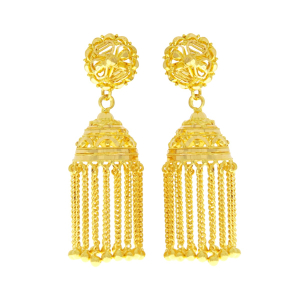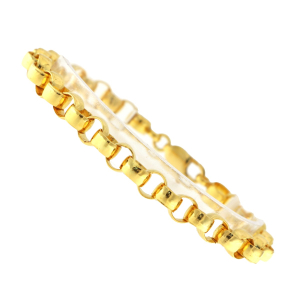Wedding rings are timeless symbols of love and commitment, marking the beginning of a lifelong journey together. In Asia, where diverse cultures and rich traditions shape every aspect of life, wedding rings hold deep significance. Asian wedding rings are more than just pieces of jewelry; they are reflections of heritage, indian gold rings craftsmanship, and the eternal bond between two souls.
The Cultural Significance of Asian Wedding Rings
In many Asian cultures, wedding rings are not just adornments but are imbued with symbolic meanings. Gold, a metal revered for its purity and durability, is the most popular choice for wedding rings across Asia. Whether it’s the intricate designs of Indian gold rings, the minimalist elegance of Japanese rings, or the ornate beauty of Chinese wedding bands, each piece tells a story of tradition, love, and commitment.
In some cultures, the exchange of rings is an essential part of the wedding ceremony, symbolizing the couple’s promise to support and cherish each other. In others, rings are often passed down as family heirlooms, carrying the blessings and memories of previous generations.
Unique Features of Asian Wedding Rings
Asian wedding rings are known for their unique blend of traditional motifs and modern designs. Here are some of the key features that make these rings stand out:
-
Intricate Craftsmanship: Asian wedding rings are often characterized by their intricate craftsmanship. Artisans in countries like India, China, and Thailand use traditional techniques such as filigree, engraving, and hand-carving to create rings that are not only beautiful but also rich in cultural symbolism.
-
Cultural Motifs: The designs of Asian wedding rings often incorporate cultural motifs and symbols that hold special meanings. For example, dragon and phoenix motifs in Chinese rings symbolize the harmonious balance of male and female energies, while lotus flowers in Indian rings represent purity and spiritual enlightenment.
-
Use of High-Quality Materials: Gold is the preferred metal for many Asian wedding rings, with 22ct gold being especially popular in regions like South Asia. However, other materials such as platinum, jade, and silver are also used, depending on cultural preferences and personal tastes.
-
Gemstone Embellishments: Many Asian wedding rings feature precious and semi-precious gemstones. In India, for example, diamonds, rubies, and emeralds are often set into gold rings, while in China, jade is a popular choice due to its association with purity and longevity.
-
Personalized Designs: Customization is a key aspect of Asian wedding rings. Couples often choose to engrave their names, wedding dates, or meaningful symbols onto their rings, adding a personal touch that makes the rings even more special.
Popular Styles of Asian Wedding Rings
-
Indian Wedding Rings: Indian wedding rings are renowned for their elaborate designs and vibrant use of gemstones. Traditional Indian rings, such as those featuring Kundan or Polki work, are rich in detail and often incorporate motifs like paisleys, peacocks, and floral patterns. These rings are typically crafted in 22ct gold, symbolizing wealth and prosperity.
-
Chinese Wedding Bands: Chinese wedding bands often feature motifs of dragons, phoenixes, and double happiness symbols, all of which represent good fortune and harmony. Gold and jade are commonly used materials, and the rings may be engraved with meaningful Chinese characters.
-
Japanese Wedding Rings: Japanese wedding rings are known for their minimalist elegance. Simplicity and subtlety are key features, with designs often inspired by nature. Cherry blossoms, waves, and bamboo are common motifs. Platinum is a popular choice for Japanese rings due to its durability and sleek appearance.
-
Thai Wedding Rings: Thai wedding rings often feature intricate patterns and are sometimes adorned with colorful gemstones. Gold is the most commonly used metal, and the rings may include traditional Thai designs or be inspired by Buddhist symbols, reflecting the spiritual aspect of marriage.
-
Korean Wedding Rings: Korean wedding rings often emphasize simplicity and elegance. Traditional designs may incorporate symbols like cranes (for longevity) or intertwined knots (for unity). Modern Korean rings, however, may lean towards a more contemporary aesthetic, blending tradition with modernity.
The Symbolism Behind Asian Wedding Rings
The symbolism associated with Asian wedding rings is deeply rooted in the cultural and spiritual beliefs of the region. Here are a few examples of the symbolism found in different Asian cultures:
-
India: In Indian culture, the circular shape of the ring represents eternal love, with no beginning or end. Gold rings are also believed to bring wealth, prosperity, and good luck to the marriage.
-
China: Chinese wedding rings often feature the dragon and phoenix, symbolizing the yin and yang of marriage, where the dragon represents the groom and the phoenix the bride. The double happiness symbol is also popular, signifying joy and prosperity in the marriage.
-
Japan: In Japan, simplicity and nature are revered. Rings with cherry blossom motifs symbolize the fleeting beauty of life and love, while bamboo motifs represent resilience and strength.
-
Thailand: Thai wedding rings often incorporate spiritual symbols, such as the lotus flower, which represents purity and enlightenment. Gold rings are also associated with the sun, symbolizing warmth and life.
Choosing the Perfect Asian Wedding Ring
When selecting an Asian wedding ring, it’s important to consider both cultural significance and personal preference. Here are a few tips to help you choose the perfect ring:
-
Understand the Cultural Significance: Consider the cultural symbols and motifs that resonate with you and your partner. Whether it’s the lotus flower, the dragon and phoenix, or a specific gemstone, choose a design that holds meaning for both of you.
-
Consider the Quality of Materials: Ensure that the ring is made from high-quality materials, whether it’s 22ct gold, platinum, or jade. The quality of the materials will not only affect the ring’s durability but also its appearance and symbolism.
-
Personalize Your Ring: Adding a personal touch, such as an engraving asian wedding rings or a custom design, can make your wedding ring even more special. Consider incorporating meaningful symbols, dates, or names into the design.
-
Balance Tradition and Modernity: While it’s important to honor cultural traditions, don’t be afraid to incorporate modern elements that reflect your personal style. Many contemporary Asian wedding rings successfully blend traditional motifs with modern designs.
-
Consult with a Skilled Jeweler: Working with a jeweler who understands the cultural significance of Asian wedding rings can help you create a piece that is both beautiful and meaningful. Look for a jeweler with experience in traditional Asian designs and craftsmanship.
Conclusion
Asian wedding rings are a beautiful fusion of tradition, culture, and modern elegance. Whether you are drawn to the intricate designs of Indian rings, the symbolic motifs of Chinese bands, or the minimalist beauty of Japanese rings, each piece tells a story of love, commitment, and heritage. As you embark on this new chapter of your life, choosing an Asian wedding ring is a meaningful way to honor your cultural roots while celebrating your unique love story.






